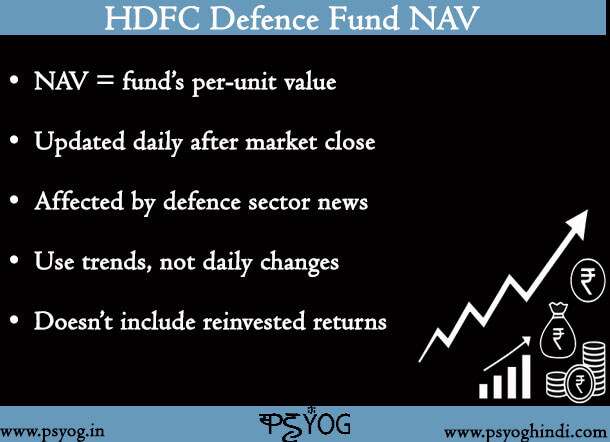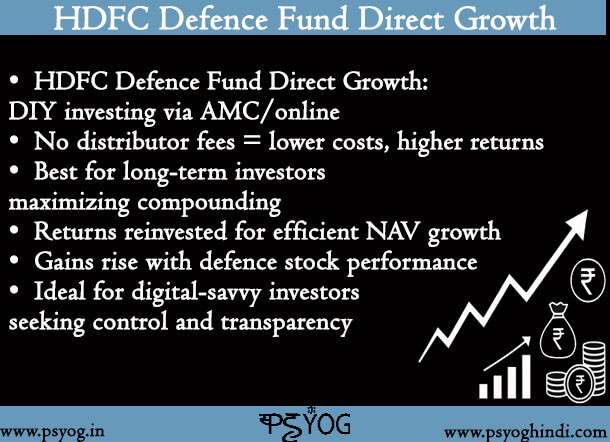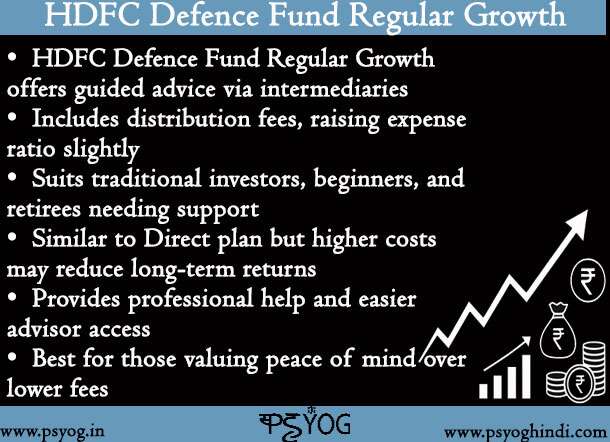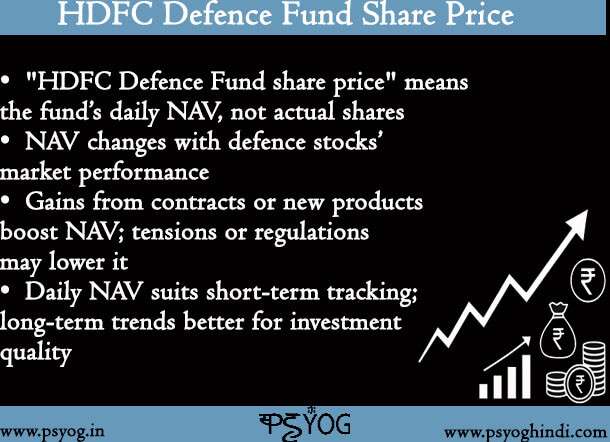HDFC Defence Fund: NAV, Direct Growth, Regular Growth & Share Price
Guess what, the HDFC Defence Fund has emerged as a gripping option for investors looking to capitalize on India’s growing defence manufacturing ecosystem. The thing is, this mutual fund has been attracting attention for its focus on companies involved in defence and related sectors. Investors often evaluate different aspects like the HDFC Defence Fund NAV, HDFC Defence Fund Direct Growth, and HDFC Defence Fund Regular Growth to decide which suits their goals. Additionally, many keep an eye on the HDFC Defence Fund share price as a daily benchmark. Therefore, this article offers a detailed, data-driven analysis of all these components to help you understand how this fund performs and fits into broader investment strategies.
HDFC Defence Fund NAV
The HDFC Defence Fund NAV (Net Asset Value) serves as a snapshot of the per-unit value of the fund on a given day. It is calculated by taking the total market value of the portfolio’s holdings, subtracting liabilities, and dividing by the total number of units issued. This metric updates at the close of each business day and reflects how the fund’s investments are faring in the current market. (Read: Everything about parag parikh flexi cap fund)
One day’s NAV movement may not indicate much, but consistent upward or downward trends reveal how effectively the fund is managed. Since this is a sector-focused mutual fund, NAV can fluctuate based on events like defence budget announcements, geopolitical developments, or new contracts awarded to companies within the portfolio. While NAV shows the unit cost, it doesn’t account for returns with reinvestments, so it’s best to use it alongside total return data for a complete performance picture.

HDFC Defence Fund Direct Growth
The HDFC Defence Fund Direct Growth plan is tailored for those who prefer a DIY approach to investing. By investing directly through AMC websites or registered online platforms, investors avoid distributor commissions, resulting in a lower expense ratio. Over time, this cost efficiency can significantly enhance total returns.
From a financial standpoint, the Direct Growth option is best suited for long-term investors who understand market cycles and prefer maximizing compounding benefits. As returns are reinvested back into the fund, the NAV compounds more efficiently. When defence stocks perform well—often triggered by government contracts or positive sectoral news—investors in the Direct Growth plan see higher gains due to minimal deductions.
This version appeals to digitally inclined investors who seek transparency, lower costs, and greater control over their portfolios.

HDFC Defence Fund Regular Growth
The HDFC Defence Fund Regular Growth option is structured for those who value personalized advice from a financial intermediary. It includes distribution fees that raise the fund’s expense ratio slightly, but offers the benefit of guided investment decisions. For many traditional investors, especially first-timers or retirees, this handholding is essential. (Read: Best shares under 100 that can make you good money)
Though the fund structure is similar to the Direct plan, the cost difference can affect returns in the long run. For instance, if both plans grow at a nominal rate, the Regular Growth variant will yield slightly lower overall returns due to its higher operating costs. However, the trade-off is professional support and often easier access through trusted advisors.
In essence, the Regular Growth plan is ideal for investors who prioritize peace of mind and advisory input over fee minimization.

HDFC Defence Fund Share Price
The term HDFC Defence Fund share price is widely used to describe the cost of purchasing one unit of the fund, even though mutual funds technically don’t issue shares like individual companies. Instead, the share price often refers to the NAV, which changes daily based on the fund’s holdings and market performance.
Fluctuations in this “price” stem from movements in defence-related companies that form the fund’s core. For example, when a major firm in the defence sector wins a government contract or announces a new product line, the share price—or NAV—can rise. Likewise, any regulatory restrictions or global tensions can have an inverse effect.
While some use daily share price data for short-term moves, a long-term view based on historical trends and portfolio strength is more reliable for gauging investment quality.

Conclusion
The HDFC Defence Fund is strategically positioned to benefit from the Indian government’s push toward self-reliance in defence production and rising capital expenditure in the sector. It offers various options suited to different investor profiles. Whether tracking the HDFC Defence Fund NAV to monitor market performance, choosing between HDFC Defence Fund Direct Growth for low-cost investing or HDFC Defence Fund Regular Growth for professional guidance, each path offers a unique blend of benefits and considerations. Meanwhile, the HDFC Defence Fund share price serves as a useful indicator of how the fund is valued on any given day. (Read: Best small caps mutual funds for long term profits)
Understanding these components helps investors make informed decisions in a niche yet promising segment of the mutual fund landscape. While the fund’s focused exposure to defence stocks may lead to higher volatility, it also brings the potential for above-average returns over time. Always assess your investment goals, risk appetite, and holding period before investing in any variant of the HDFC Defence Fund.
FAQs
Is HDFC Defence Fund a good investment?
Depends on what you’re after. If you’re okay with some risk and believe defence stocks have room to grow, it could work out well. Just know it’s not your average fund—it sticks to one sector, so the ride might be a bit bumpy at times.
What is the current NAV of HDFC Defence Fund?
It changes every day, honestly. Your best bet? Just head to HDFC’s site or a finance app you trust—they’ll have the latest number listed there.
What is the future growth of HDFC Defence Fund 2025?
Hard to say for sure, but there’s definitely buzz around defence these days. With the government putting in big money and local production on the rise, the fund could do well—if the momentum sticks around.



